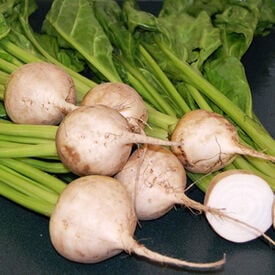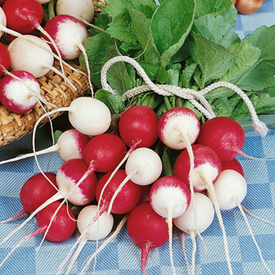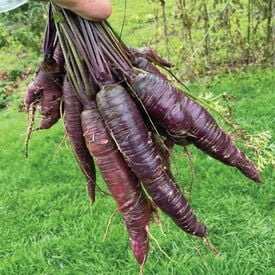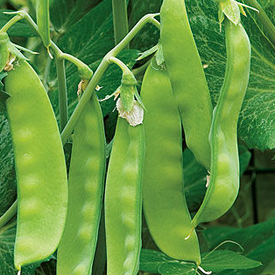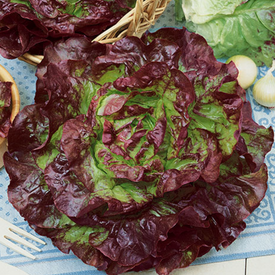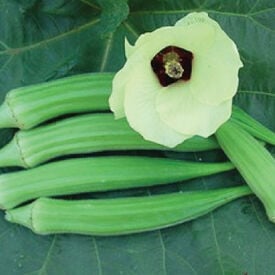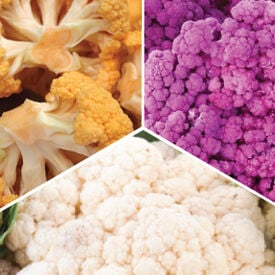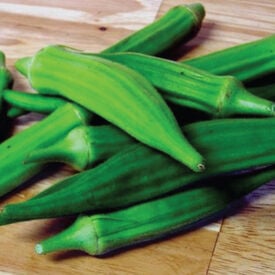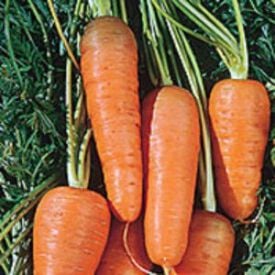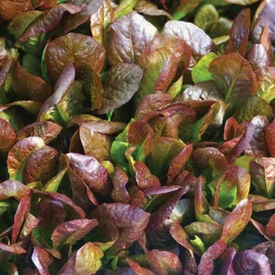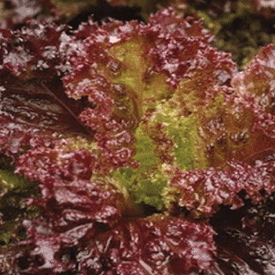The Avalanche beet, scientifically known as Beta vulgaris var. conditiva 'Avalanche,' is a popular variety of beetroot that has gained recognition for its exceptional characteristics. Historically, beets have been cultivated for thousands of years, with evidence of their consumption dating back to ancient civilizations like the Egyptians and Greeks. The Avalanche beet is a modern cultivar that has been selectively bred for its unique attributes. Avalanche beets are renowned for their mild, sweet flavor and tender texture. They are typically harvested at a smaller size, around 2-3 inches in diameter, making them ideal for salads, roasting, and pickling. The days to maturity for Avalanche beets range from 45 to 50 days, making them a relatively quick-growing crop. These beets are characterized by their crisp, pure white flesh and skin, giving them their distinctive appearance. They are also known for their resistance to common beet diseases such as Cercospora leaf spot and Rhizoctonia root rot, which can help ensure a healthy yield. When growing Avalanche beets, it's essential to provide them with well-draining, loose soil that is rich in organic matter. They thrive in full sun but can tolerate partial shade. Proper spacing is crucial, with rows spaced about 12-18 inches apart and individual beets planted 2-4 inches apart within the rows. Adequate watering is necessary to keep the soil consistently moist, but not waterlogged. With the right care and growing conditions, Avalanche beets can yield an abundant harvest of these delightful, mild-flavored, and visually striking vegetables.
The Confetti Mix is a fast maturing, colorful bled of the classic red, white, and bi colored radishes, all with a remarkable flavor! This fun mix is a beautiful addition to any assortment. These classic bright colors are perfect for any market grower or home gardener.
Purple Sun produces Uniform roots with smooth shoulders. Dark purple carrots that grow up to 10" in length. A great production carrot for fields, bunching and mechanical harvest.
The Oregon Sugar Pod II Pea is a high yielding snow pea that has a high percentage of two pods per cluster! This variety grows to a height of 28" and bears 4 1/2" long pods that are disease resistant to pea virus, common wilt and powdery mildew. The Oregon Sugar Pod II produces delicious flat and tender pea pods that are superb for freezing!
Carmona Red is a favorite among many market growers! This lettuce variety produces big, bright red heads with lime green hearts. The Carmona Red has a nice silky texture and is very disease resistance.
The Mammoth Melting Pea is a snow pea that adds the perfect mouthwatering crunch to any salad! The 5-6 foot tall vines require trellising for support. This variety's large sweet pods thrive in the cooler weather. Add a fresh pop of bright green to any garden or dish with the Mammoth Melting! Certified Organic. Learn more about our organic seeds.
Perkins Long Pod Okra is an old Southern heirloom that grows long and tall! This variety will grow to be to 5' and produces bright green pods that are up to 8" long. Perkins Long Pod is an early maturing okra that should be harvested at 3-5" in length for most crisp, tender pods. This okra is excellent for canning, pickling and cutting up for gumbo or stews.
The Fiesta Blend is a five color radish blend of red, pink, yellow, white and purple! This colorful blend will be sure to a pop of fun color to any garden. Serving up the Fiesta Blend in salads or dishes is a great addition to any party or gathering!
The Colorful Mix is a fun blend of different colorful cauliflower varieties. Have fun with this colorful mix of cauliflower varieties. This is a great mix to plant and sale at farmers markets. People will marvel at the bright colors! The varieties include Cheddar, Graffiti, and Snowball.
Little Finger carrot is a baby gourmet Nantes type that develops color quickly for early pulling. The most popular variety of baby carrots. Tender, sweet miniature carrots are ideal for eating fresh, canning or pickling. Organic seed available.
The Emerald Okra is a beautifully bright early maturing okra variety! This okra is an old heirloom variety from the 1950's that was first developed by the Campbell's Soup Company. This variety produces straight okra that keeps its vibrant green color even after being cooked. Emerald Okra is best harvested between 3-4" for the most tender and tasty pods.
Red Cored Chantenay carrots are a vibrant variety known for their distinct color and shape. They feature a deep orange skin that transitions to a striking red core, creating a visually appealing contrast. The carrots have a stout, conical shape, tapering at the end, which makes them easy to harvest and handle. These carrots are celebrated for their sweet, rich flavor and crisp texture, making them ideal for both raw snacking and cooking. They’re versatile in the kitchen, lending themselves well to roasting, steaming, or incorporating into salads. Red Cored Chantenay carrots are also known for their high nutrient content, providing a good source of vitamins and minerals. Their unique coloration is not only attractive but also indicates a high level of antioxidants, contributing to their health benefits.
Calabrese Green Sprouting broccoli is a popular and nutritious vegetable known for its tender florets and robust flavor. Originating from Italy, specifically the Calabria region, this variety was cultivated for centuries before gaining popularity worldwide, especially in home gardens and markets. Calabrese broccoli include its sturdy, upright stalks and large, vibrant green heads that typically form in loose clusters. The color is a rich, dark green, with tightly packed florets that can range from small to medium-sized. When cooked, Calabrese broccoli offers a slightly sweet and earthy flavor, making it a versatile ingredient in a variety of dishes, from stir-fries to soups. An appealing attribute of Calabrese is its ability to produce side shoots after the main head is harvested, providing multiple harvests throughout the season. This variety is also valued for its nutritional benefits, being rich in vitamins C and K, fiber, and antioxidants. Its hardiness and adaptability make Calabrese green sprouting broccoli a favorite among gardeners and cooks alike.
Bibb is a crisp, clean, and easy to grow butterhead lettuce that has light green leaves with the occasional red spots. The crispy heads often self blanch in the center. This lettuce variety is perfect for farmers markets and for the home gardener. This Bibb does well in the heat, yet still grows quickly in our cool weather. Lt. John B. Bibb served in the War of 1812, represented Logan County in the Kentucky House of Representatives and the state Senate from 1827 to 1834. Lt. Bibb was also an amateur horticulturist and developed the Bibb lettuce we know and love today. However, it wasn't offered commercially until 1935.
The Green Salad Bowl is a decorative rosette type of lettuce with closely set crispy leaves. This looseleaf lettuce's crumpled leaves hold water very well, making it a popular variety!
The spicy flavor, attractive purple stems, and green leaves of the Hong Vit Radish makes it the perfect addition to any salad! This radish is a longtime favorite that is now available in organic form. A very fast growing microgreen! Grows straight and attractive purple stems that are hairless. Micro radish leaves add spicy flavor, visual appeal, and bulk to mixes.
The Cimarron is a very beautifully colored romaine lettuce! This tasty lettuce has bright green-red leaves that fade to deep red tips. This romaine type lettuce has good disease and bolt resistance. Cimarron is a favorite among gardeners for its beautiful hue and crispy texture in salad mixes!
The Lolla Rosso Darky Lettuce is known for its deep red, curled loose leaves. This attractive lettuce is an heirloom that has beautiful magenta leaves with a light green base that gives a great presentation. Lolla Rosso Darky has a mild flavor that is a cut and come again, good to sow in the spring or fall.
